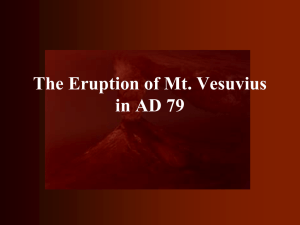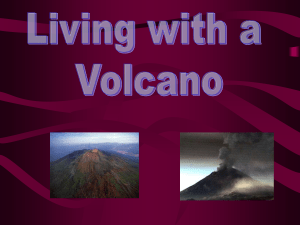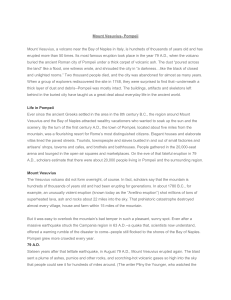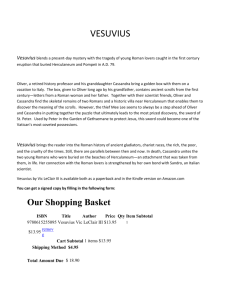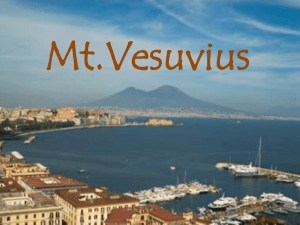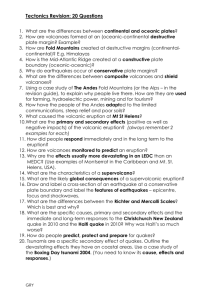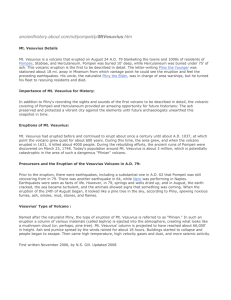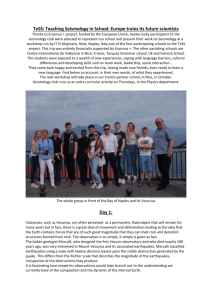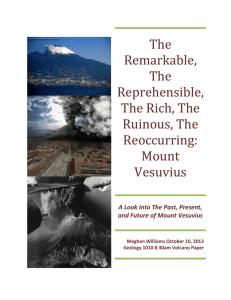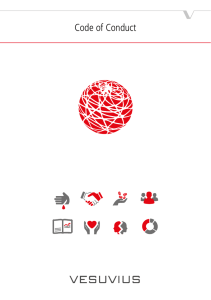Mount Vesuvius
advertisement
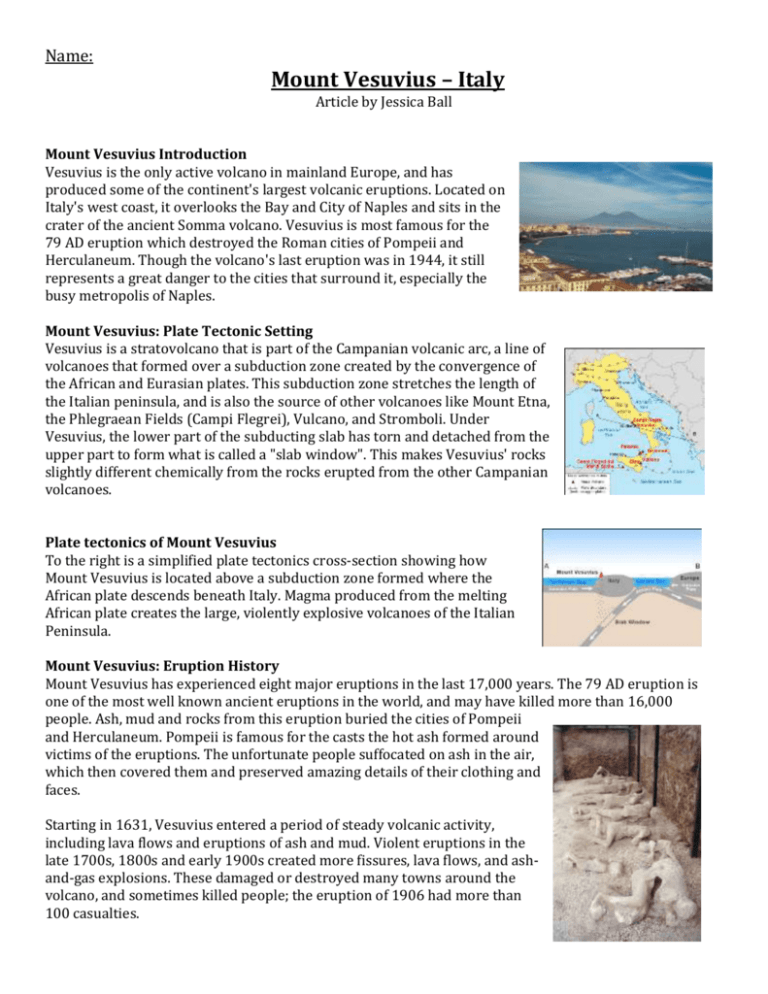
Name: Mount Vesuvius – Italy Article by Jessica Ball Mount Vesuvius Introduction Vesuvius is the only active volcano in mainland Europe, and has produced some of the continent's largest volcanic eruptions. Located on Italy's west coast, it overlooks the Bay and City of Naples and sits in the crater of the ancient Somma volcano. Vesuvius is most famous for the 79 AD eruption which destroyed the Roman cities of Pompeii and Herculaneum. Though the volcano's last eruption was in 1944, it still represents a great danger to the cities that surround it, especially the busy metropolis of Naples. Mount Vesuvius: Plate Tectonic Setting Vesuvius is a stratovolcano that is part of the Campanian volcanic arc, a line of volcanoes that formed over a subduction zone created by the convergence of the African and Eurasian plates. This subduction zone stretches the length of the Italian peninsula, and is also the source of other volcanoes like Mount Etna, the Phlegraean Fields (Campi Flegrei), Vulcano, and Stromboli. Under Vesuvius, the lower part of the subducting slab has torn and detached from the upper part to form what is called a "slab window". This makes Vesuvius' rocks slightly different chemically from the rocks erupted from the other Campanian volcanoes. Plate tectonics of Mount Vesuvius To the right is a simplified plate tectonics cross-section showing how Mount Vesuvius is located above a subduction zone formed where the African plate descends beneath Italy. Magma produced from the melting African plate creates the large, violently explosive volcanoes of the Italian Peninsula. Mount Vesuvius: Eruption History Mount Vesuvius has experienced eight major eruptions in the last 17,000 years. The 79 AD eruption is one of the most well known ancient eruptions in the world, and may have killed more than 16,000 people. Ash, mud and rocks from this eruption buried the cities of Pompeii and Herculaneum. Pompeii is famous for the casts the hot ash formed around victims of the eruptions. The unfortunate people suffocated on ash in the air, which then covered them and preserved amazing details of their clothing and faces. Starting in 1631, Vesuvius entered a period of steady volcanic activity, including lava flows and eruptions of ash and mud. Violent eruptions in the late 1700s, 1800s and early 1900s created more fissures, lava flows, and ashand-gas explosions. These damaged or destroyed many towns around the volcano, and sometimes killed people; the eruption of 1906 had more than 100 casualties. Name: Mount Vesuvius – Italy Article by Jessica Ball The most recent eruption was in 1944 during World War II. It caused major problems for the newly-arrived Allied forces in Italy when ash and rocks from the eruption destroyed planes and forced evacuations at a nearby airbase. Did You Know? The 79 AD eruption of Vesuvius is why volcanologists (scientists who study volcanoes) use "Plinian" to describe large volcanic eruption clouds. Pliny the Younger, a Roman historian who witnessed the 79 AD eruption, wrote the oldest surviving description of the tall, tree-shaped cloud that rose above the volcano. Modern volcanologists use the term to describe large-volume, violent eruptions that produce quicklyexpanding clouds of rock, ash and gases which rise many miles into the atmosphere. Some more recent examples of Plinian eruptions include Mount St. Helens in 1980 and Pinatubo in 1990. Here is Pliny's description... "On 24 August, in the early afternoon, my mother drew [my uncle's] attention to a cloud of unusual size and appearance. Its general appearance can be best expressed as being like an umbrella pine, for it rose to a great height on a sort of trunk and then split off into branches, I imagine because it was thrust upwards by the first blast and then left unsupported as the pressure subsided, or else it was borne down by its own weight so that it spread out and gradually dispersed. Sometimes it looked white, sometimes blotched and dirty, according to the amount of soil and ashes it carried with it." Answer the following questions in complete sentences. Be sure to use evidence from the text. 1. Where is Mt. Vesuvius located? 2. What kind of a volcano is Mt. Vesuvius? 3. What type of plate movement created Mt. Vesuvius? 4. What happened to the people who lived in Pompeii? 5. When was Mt. Vesuvius’ last eruption?
